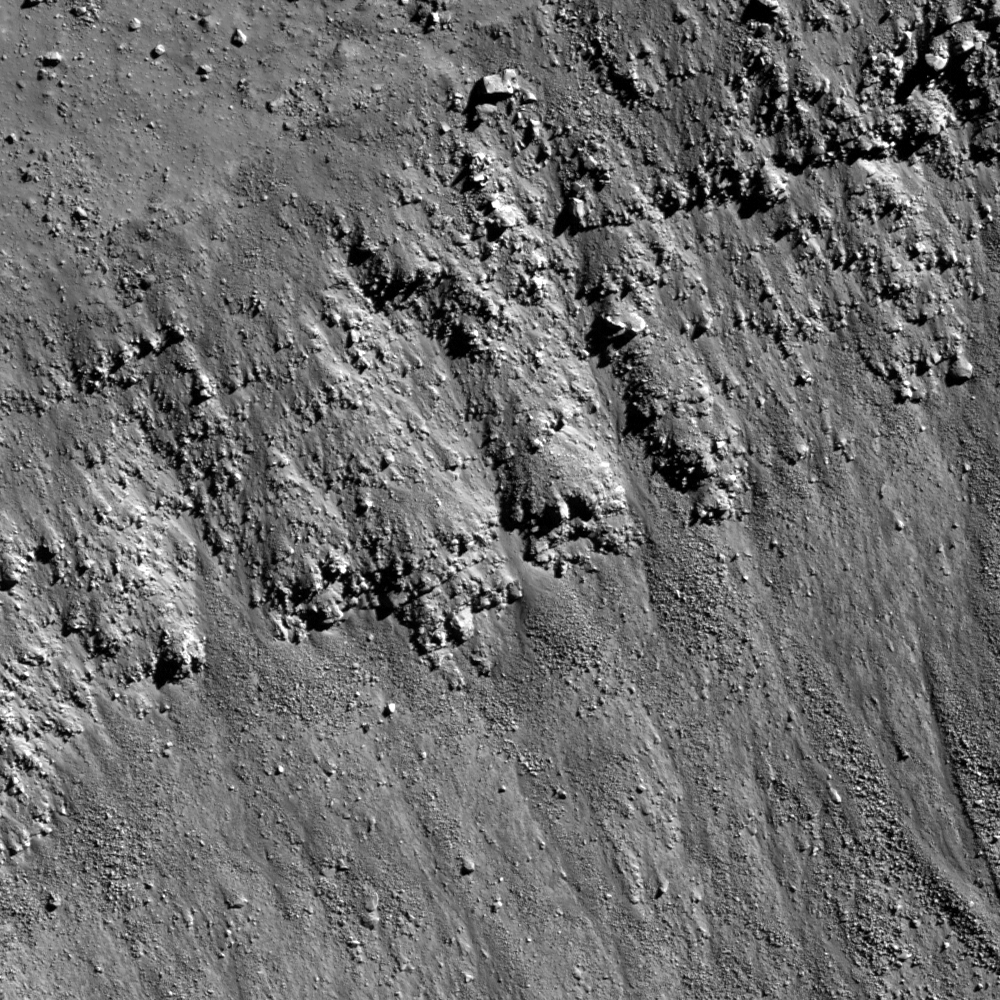
Piton B is a young, fresh crater (about 4.5 km diameter) located in northeast Mare Imbrium. Along the upper part of this young crater wall, you can find clear layering similar as seen in
In the upper right corner of this image is a portion of the crater rim, downslope is toward the bottom. The relatively resistant layers discontinuously outline their horizontal expanses. Among them, the blocky outcrop at the center of this image shows the clearest bedding plane. The thinnest layers are roughly 3 to 4 meters thick, assuming a slope angle about 30°.
Layer thickness estimates from orbital views are not as accurate as geologists would make standing on the outcrop, but many measurements at multiple craters give a great estimate of the general layer thicknesses of the original lava flows. Knowing thickness of flows helps us understand the viscosity and flow rates of ancient mare volcanism.
Explore the fresh crater wall of Piton B in full NAC frame yourself!
Related posts:
Dark streaks in Diophantus crater, Lava Flows Exposed in Bessel Crater, Layering in Euler Crater, Layers in Lucian Crater, Marius A, Galilaei's Layered Wall, Dawes, Pytheas
Published by Hiroyuki Sato on 14 November 2012
